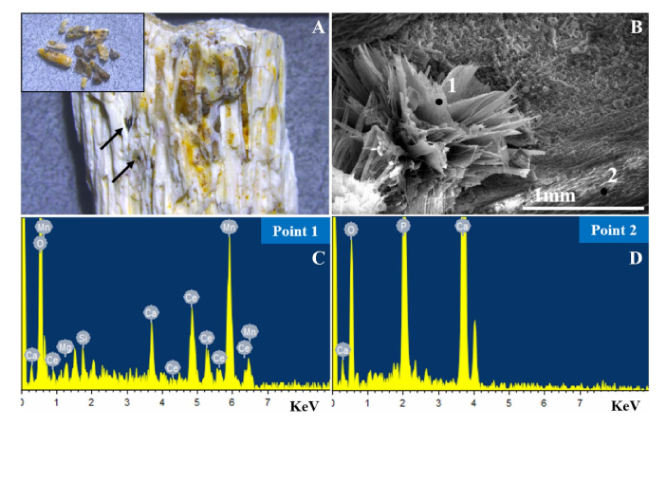“Fluorapatite diagenetic differences between Cretaceous skeletal fossils of Mongolia and Korea”
- Authors
T. Kim, Y. Lee*, and Y.-N. Lee
- Journal
Palaeogeography, Palaeoclimatology, Palaeoecology
Vol.490, pp.579-589, 2018.01 - DOI
Abstract
The skeletal tissue of modern bones is mostly composed of hydroxyapatite, which contains calcium and phosphate. During diagenesis, calcium, phosphorus and minerals of the hydroxyl group can be exchanged with other elements to form carbonate-fluorapatite. It is well-established that paleoenvironmental evolution and geological events have played a significant role in the compositional changes of fossilized bones. For example, skeletal fossils from the Hasandong Formation (Aptian- early Albian) of the Gyeongsang Basin in Korea are characterized by black and dark colors, whereas dinosaur bones from the Nemegt Formation (early Maastrichtian) of the Nemegt and Altan Uul ranges in Mongolia are light brown and white. This study investigated the mineralogical and geochemical causes for the differences in coloration between these two groups of fossilized bones. Multiple synchrotron-based techniques were utilized, including synchrotron–XRF, –XRD, –X-ray micro-computed tomography (μ-CT), micro-XRF and SEM-EDX data to analyze the elemental composition and mineral phases in dark Korean fossilized bones, which are characterized by the presence of iron, aluminum, magnesium and other trace elements. Chamosite was identified as a secondary mineral at 5% by weight of the total fossil mass, which is primarily composed of carbonate-fluorapatite. However, skeletal fossils from Mongolia are characterized by secondary minerals, such as barite, goethite and calcite, which accumulate in pore spaces. Since different secondary minerals result from different alteration procedures, the presence of chamosite in the Korean fossils suggests alteration by spatial replacement, and the presence of barite in the Mongolian fossils suggests alteration by accumulation. The investigation of these two skeletal groups, analyzed using a suite of synchrotron-based multidisciplinary techniques, revealed contrasting mineralogical and geochemical details and helps to determine the origin of fossil colorization.












